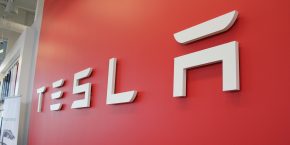

People affiliated with Tesla have often been outspoken about how hydrogen fuel cells are simply a bad solution to the sustainable transport issue. Just last week we reported on Tesla co-founder and CTO, JB Straubel, going on a quick rant about hydrogen and saying that fuel cells will soon be “irrelevant” in the transportation industry.
Now another Tesla co-founder, Marc Tarpenning, went a little further than Straubel and called hydrogen fuel cells a “scam”. He also said out loud what many in the industry are thinking – that energy companies are supporting the technology for its inefficiency.
Tarpenning is not with Tesla anymore, but he is one of the original co-founders with his long-time friend and business partner, Martin Eberhard. He was on the Internet History Podcast last week to talk about his ventures and he explained in great details the foundings of his two companies; NuvoMedia and Tesla Motors.
The podcast is worth listening in full – see below (Tesla starts at about 25 minutes in), but I found the rant about hydrogen fuel cells particularly interesting.
After selling NuvoMedia, a maker of e-book readers, he and Eberhard first investigated alternative fuel sources in order to start a company to solve the sustainable transport issue. They looked into hydrogen fuel cells and quickly dismissed it:
If your goal is to reduce energy consumption, petrol or whatever resource, you want to use it as efficiently as possible. You don’t want to pick something that consumes a lot for whatever reason, and hydrogen is uniquely bad.
There’s a saying in the auto industry that hydrogen is the future of transportation and always will be. It’s a scam as far as I can tell because the energy equation is terrible. It’s just terrible.
People will say that hydrogen is the most abundant element in the universe, but it’s abundant out there in the universe not here. We live on a planet where hydrogen is super reactive – it’s bound up into everything. It’s bound up into water, wood and everything else. They only way that you get hydrogen requires you to pour energy into it to break it from the chemical bonds.
Electrolysis is the most commen method. You put electricity in water and it separates it, but you are pouring energy in order to make hydrogen, and then you have to compress it and that takes energy, and then you have to transport it to wherever you actually need it, which is really difficult because hydrogen is much harder to work with than gasoline or even natural gas – and natural gas is not that easy.
And then you ultimately have to place it into a car where you’ll have a very high-pressure vessel which offers its own safety issues – and that’s only to convert it back again to electricity to make the car go because hydrogen fuel cell cars are really electric cars. They just have an extraordinary bad battery.
Hydrogen is an energy carrier and not a primary fuel source on this planet. Maybe out somewhere in the universe, but not on a terrestrial planet.
When you add that all up, it turns out that the amount of energy per kilometer driven is just terrible. It’s way worse than almost anything else you can come up with – which I always suspected is one of the reasons why the energy companies have long been big proponents of it.
When we were raising money the first time, we had very carefully gone through the math to understand fuel cells because there was a bunch of money going into fuel cells at the time and we also looked at biofuels and ethanols – we sort of went down the whole list to figure out what the most energy efficient system was – which turned out to be battery electric cars.
Tarpenning then described how they included a slide about hydrogen fuel cells in their powerpoint presentation when trying to raise money from venture capitalists for Tesla. The slide was of course about why Tesla would use batteries to power its vehicles and not hydrogen.
He says that half of the VCs would ask them to skip the slide saying that they already ran their own cost analysis and they are aware of the inefficiency of the system, but the other half of the VCs would go really quiet and then start asking more questions. Marc explained that those VCs had already invested in fuel cell companies, which most went out of business by now.
Tarpenning left Tesla in 2008 after an internal power-struggle saw his co-founder Martin Eberhard ousted as CEO and Elon Musk took over not long after. He is still involved in the electric vehicle industry. He invested, alongside Eberhard, in electric motorcycle maker Alta Motors in 2014.
We also recently reported on him joining the advisory board of ‘self-driving vehicles for industry’ company: Clearpath Robotics.
Here’s the podcast in full:
FTC: We use income earning auto affiliate links. More.




Comments